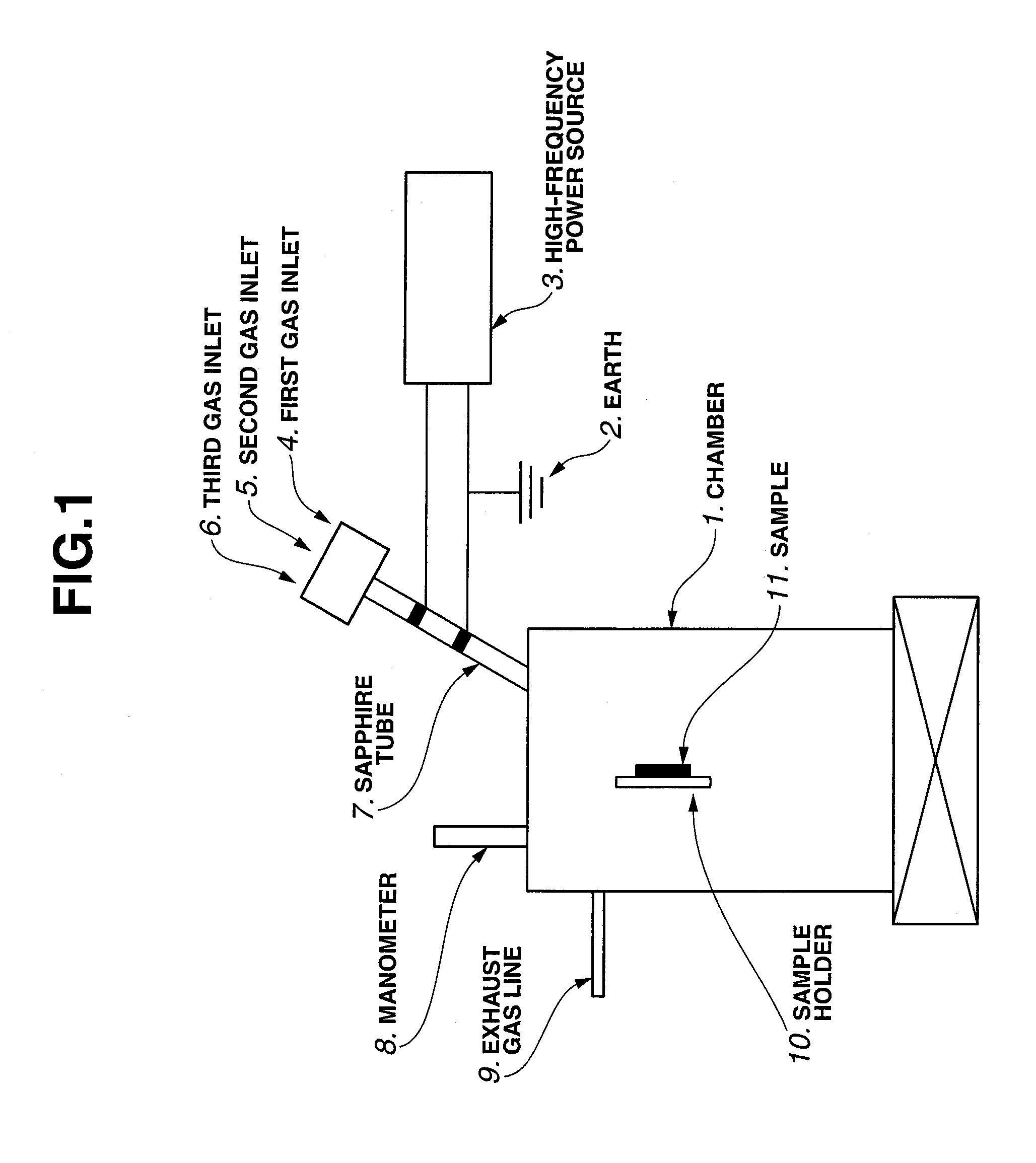Dry Etching Agent and Dry Etching Method Using the Same
a technology of dry etching agent and dry etching method, which is applied in the field of dry etching agent and semiconductor dry etching method, can solve the problems that the disclosed reactive gas is not always suitable for etching gas, and achieves the effects of high gwp, easy production, and low cos
- Summary
- Abstract
- Description
- Claims
- Application Information
AI Technical Summary
Benefits of technology
Problems solved by technology
Method used
Image
Examples
examples
[0081]The present invention will be described in more detail below by way of the following examples. It should be noted that the following examples are illustrative and are not intended to limit the present invention thereto.
examples 1 to 15
[0082]Using an experimental device of FIG. 1, contact-hole processing was carried out with the use of a dry etching gas containing 3,3,3-trifluoropropyne CF3C≡CH, an additive gas and, optionally, an inert gas.
[0083]As shown in FIG. 1, the experimental device had a chamber 1, an earth 2, a high-frequency power source 3 (13.56 MHz, 2.2 W / cm2), a first gas inlet 4, a second gas inlet 5, a third gas inlet 6, a sapphire tube 7, a manometer 8 and an exhaust gas line 9. The 3,3,3-trifluoropropyne CF3C≡CH, the additive gas and the inert gas were introduced from the first, second and third gas inlets 4, 5 and 6 into the sapphire tube 7, respectively. In the sapphire tube 7, the introduced gas was excited by the high-frequency power source 3 to generate an active species. The generated active species was fed to a sample 11 on a sample holder 10 inside the chamber 1 whereby the sample 11 was subjected to etching. During the etching, the gas pressure inside the chamber 1 was set to 1.33 Pa; and...
examples 16 to 29
[0091]Contact-hole processing was carried out in the same manner as in Examples 1 to 15, except for using a fluorinated propyne CF3C≡CX (X=F, Cl, Br, I, CH3, CFH2, CF2H) in place of the 3,3,3-trifluoropropyne CF3C≡CH as the effective component of the dry etching agent. After the etching, the sample was evaluated for the processing shape of the vicinity of the resist opening and the selectivity of the etching rate of SiO2 or silicon nitride film to the resist. The evaluation results are indicated in TABLE 2.
PUM
| Property | Measurement | Unit |
|---|---|---|
| volume % | aaaaa | aaaaa |
| pressure | aaaaa | aaaaa |
| pressure | aaaaa | aaaaa |
Abstract
Description
Claims
Application Information
 Login to View More
Login to View More - R&D
- Intellectual Property
- Life Sciences
- Materials
- Tech Scout
- Unparalleled Data Quality
- Higher Quality Content
- 60% Fewer Hallucinations
Browse by: Latest US Patents, China's latest patents, Technical Efficacy Thesaurus, Application Domain, Technology Topic, Popular Technical Reports.
© 2025 PatSnap. All rights reserved.Legal|Privacy policy|Modern Slavery Act Transparency Statement|Sitemap|About US| Contact US: help@patsnap.com

